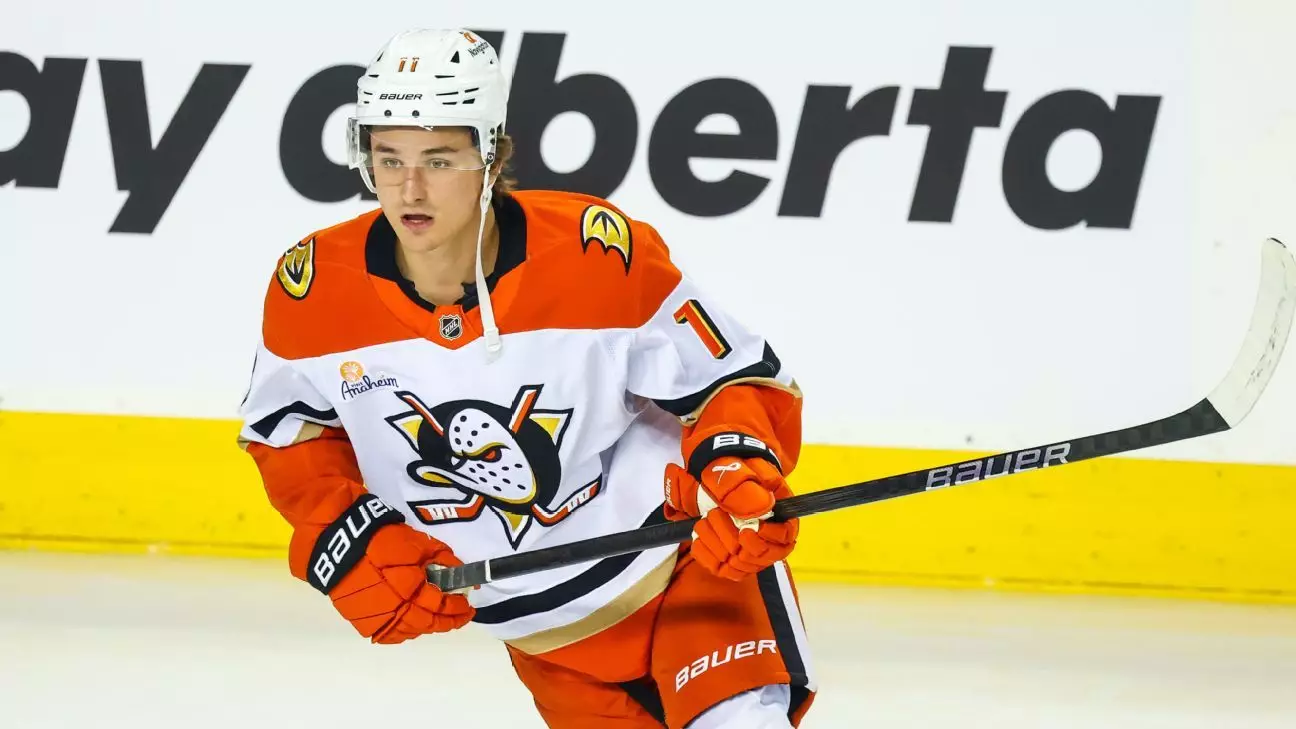In a thoroughly anticipated trade that unfolded on Monday, the Philadelphia Flyers acquired forward Trevor Zegras from the Anaheim Ducks, exchanging him for Ryan Poehling, alongside valuable draft picks. This deal marks a significant shift in the landscape of both franchises, shining a spotlight on the aspirations and strategies that govern their rosters. Zegras has long been a point of discussion in trade conversations, and now the narrative surrounding his potential can evolve—at least on paper.
The core of this trade is undoubtedly going to be focused on potential—which resonates throughout Zegras’ career thus far. Once heralded as one of the promising bright stars of the NHL, his trajectory has been clouded by injuries and inconsistency over recent seasons. The Flyers, finishing poorly in offensive statistics during the previous season, may see Zegras as both a remedy and a gamble. With his knack for scoring and racking up assists—validated by two seasons boasting over 60 points—he could emerge as the centerpiece of the Flyers offense. Yet, considerations linger. Can he truly reestablish his form, or are continued difficulties ahead?
The Flyers’ Long-term Vision
From a front office perspective, the addition of Zegras is intended to address gaps in the Flyers’ center depth, complementing existing talents like Sean Couturier and Noah Cates. The calculated assessment here is that at just 24 years old, Zegras harmonizes well with the Flyers’ young core, a team currently defined by its age demographics positioning. This acquisition doesn’t just capture immediate needs; it reflects a vision that extends well beyond this season. The Flyers could potentially build their future around Zegras, if he returns to his form from the 2021-2022 and 2022-2023 seasons.
However, for such long-term plans to materialize, the surrounding cast becomes hugely important. By placing Zegras alongside skillful wingers such as Tyson Foerster, Travis Konecny, and up-and-coming talents like Matvei Michkov or Owen Tippett, the Flyers could rekindle the offensive fire needed to thrive. The message is clear: the head office is banking on Zegras rediscovering his competitive edge, but the question remains whether the current roster can provide the necessary fuel for that resurgence.
Looking at the Ducks
On the other side of the trade, the Anaheim Ducks face their own set of evaluations and future considerations. For a franchise that has seen better days, moving a player with Zegras’ marketable talent raises eyebrows, yet there is logic behind the maneuver. Observing the emergence of Leo Carlsson and Mason McTavish—two names that have proved their worth with commendable contributions—has given the Ducks the comfort needed to part ways with Zegras. Their performance last season certainly showcased their readiness to lead the Ducks’ offense, thereby positioning Zegras as a surplus asset.
Financial realities also play a significant role in this decision. Although Anaheim boasts over $36 million in salary cap space, considerations about the future loom large. Key players, including restricted free agents Lukas Dostal, Drew Helleson, and McTavish, require contracts that could significantly reshape budget planning. The Ducks had a dual reason for trading Zegras: to offload potential cap complications while bolstering their roster in a way that aligns with a tighter financial future.
By acquiring Poehling—who comes with a more manageable contract—the Ducks cement not just an immediate on-ice asset, but a strategic financial play. Poehling’s performance last season, scoring 12 goals and 31 points, reflects that he has enough upside to be an effective contributor without weighing down the salary situation in Anaheim.
Evaluating the Trade’s Impact
What makes this trade particularly fascinating is the dichotomy of expectations surrounding the two players involved. For the Flyers, acquiring Zegras is a high-reward strategy filled with risk. The hope is that they’re investing in the right player at the right time, one that might reignite their struggling offensive line. Conversely, for the Ducks, this is about pragmatism and embracing a fresh start without solely relying on established talent who might not add to their long-term vision.
Ultimately, this trade is more than just about immediate successes or failures. It sets the tone for both franchises moving forward. If Zegras flourishes in Philadelphia while Anaheim successfully integrates their new pieces, this trade could very well define the future trajectories of both teams.
The coming seasons will reveal if the calculated risks taken here yield success, but one thing is for certain: each franchise has staked its future on talent, development, and a bit of hope—an electrifying aspect at the core of the game we love.


Leave a Reply